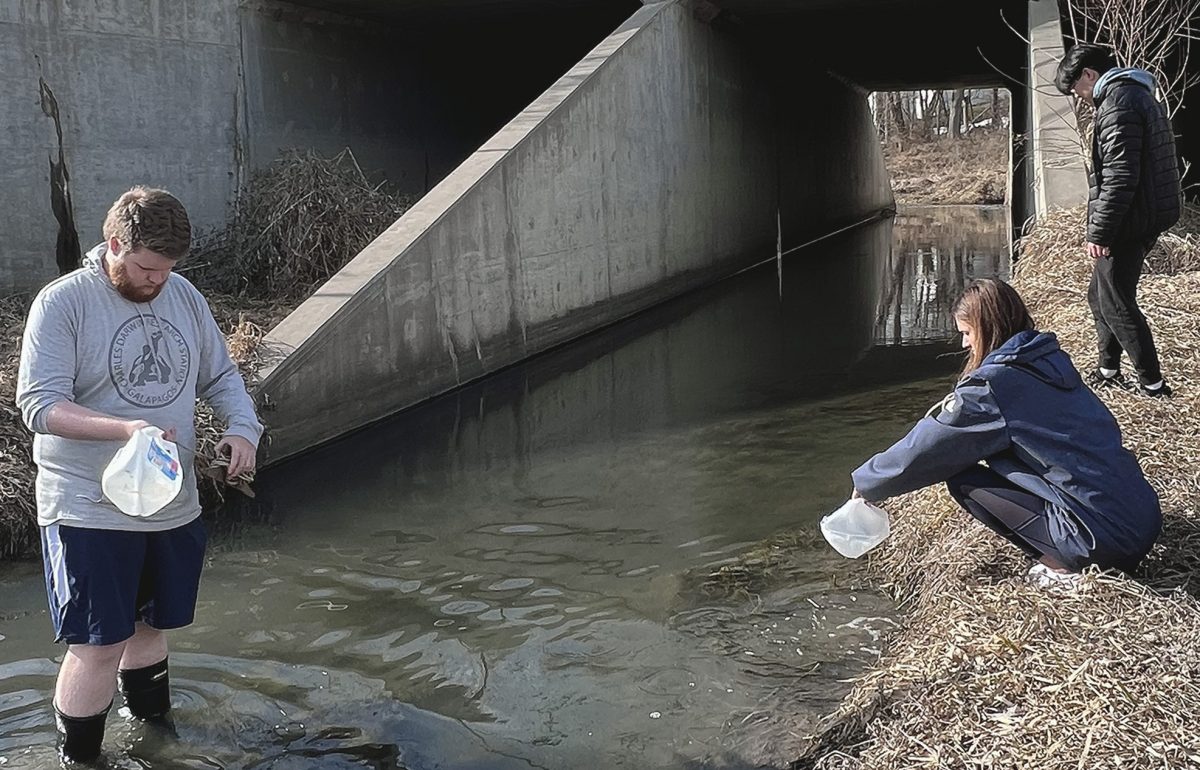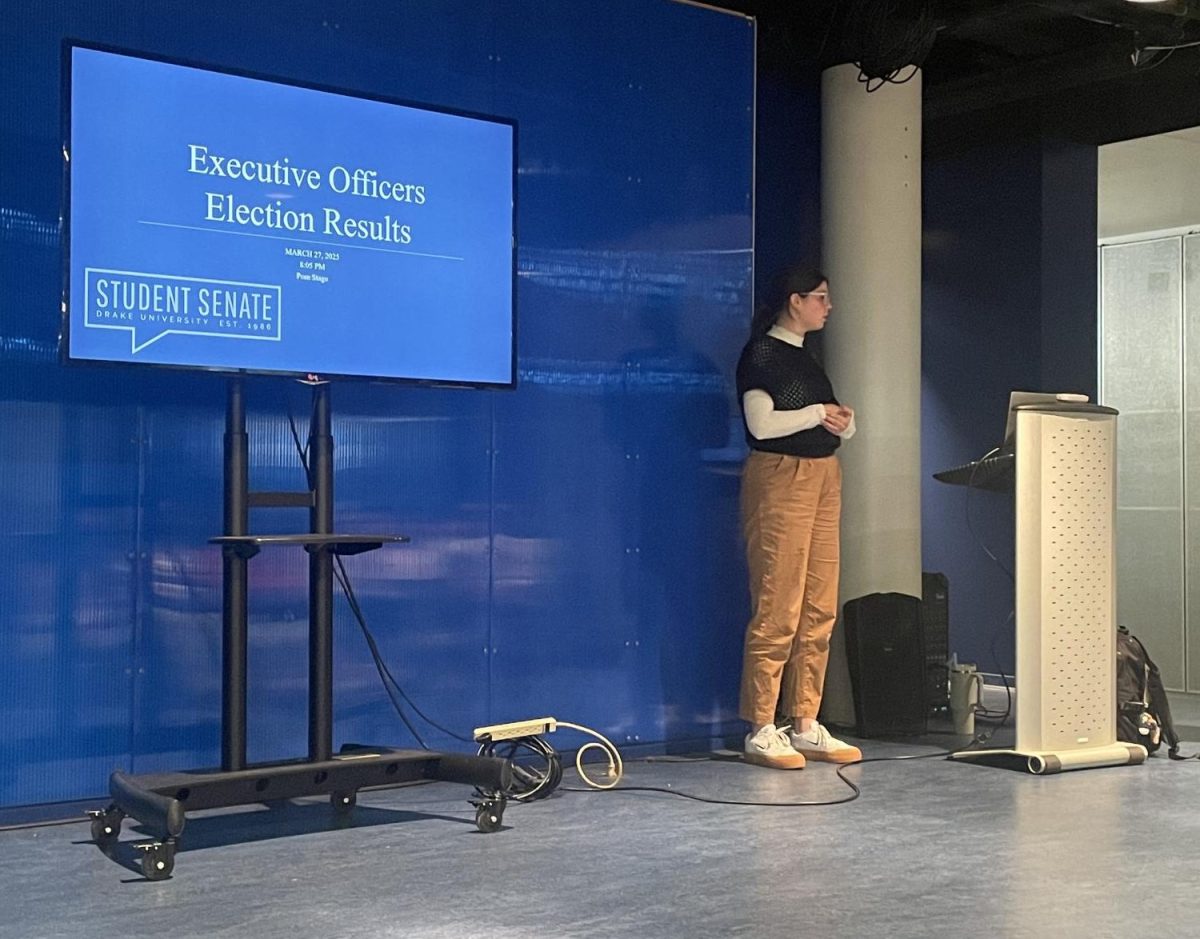Nelson is a junior secondary education major, physics minor and can be contacted at men006@drake.edu
Imagine a pot of spaghetti on the stove with the lid on it. The stove heats up. The water starts to boil. If you don’t turn down the heat or take off the lid, it boils over.
Every first-year student and Sodexo worker inevitably faces this situation. Last week, the technicians at the Fukushima nuclear reactor did as well. The only difference between their predicaments was when the student’s pot boiled over, the mainstream media didn’t immediately assume a radioactive apocalypse was underway.
As an aspiring science writer, I was disgusted by the way the mainstream media treated the recent nuclear crisis. I watched reporter after reporter using volatile language, describing increasing radiation levels and explosions without describing their consequences. This led audiences to assume the worst, when in fact the danger at all times was, believe it or not, fairly minimal.
Here are the five biggest myths I’ve seen perpetuated by the media:
1. The amount of radiation released is somehow lethal.
Many outlets reported that radiation levels had increased by “10 or 100 times” above normal. That’s true, but what most reports failed to mention was that these levels still aren’t dangerous. According to the Nuclear and Industrial Safety Agency, one micro sievert of radiation was released per hour between 9 a.m. and 5 p.m. on March 15.
That amount is not hazardous to your health. In fact, if you were continuously exposed to this level for a year, the total radiation level would be roughly equal to getting one CAT (CT) scan, according to the NISA. Additionally, this elevated level of radiation was never likely to continue.
2. Explosions have released radiation.
This one is true — but still not much of a concern. Imagine that the Fukushima reactor is a pot of Easy Mac on the stove, except the bits of noodle are radioactive fuel rods that must be kept cool. The easiest way to do that is to continuously pump several tons of water over the rods, which briefly heats up before it is flushed out and new water enters.
The 9.0 magnitude earthquake knocked out the water pumps, which meant the water already in the reactor was sitting still, and began heating up rapidly. Like Easy Mac, when water boils, steam is released. At Fukushima, some of this steam was composed of volatile hydrogen and a little iodine radiation. This hydrogen was vented out of the reactor, but built up in the building housing the reactor, which culminated in the reported explosions.
While these pictures looked frightening, they were of no major concern since the chamber containing the fuel rods had not been dangerously compromised. The amount of radiation was nothing compared to Chernobyl, which involved an explosion of the innermost containment unit. Many reports said that “explosions at nuclear reactors have taken place,” but hardly any said that “explosions have taken place but minimal radiation released.”
3. The Fukushima explosion is somehow worse than Three Mile Island.
This scary statement started when the International Atomic Energy Agency decided to bump up the rating of the Fukushima crisis from a 4 to a 5 on their International Nuclear Event Scale. This 7-step scale is supposed to provide a general idea of just how bad a nuclear crisis is.
First flaw: Fukushima is rated at the same level as Three Mile Island–not worse. Second flaw: Chernobyl is rated as a level 7, which doesn’t seem much worse, except for the fact the scale is logarithmic.
Translation: Chernobyl was 100 times more deadly than the Fukushima incident. Since nobody has died at either the Three Mile Island or Fukushima incidents, it’s hard for me to understand exactly why Fukushima is supposed to be the worst of the two. Is it in terms of property damage? Reported injuries? It seems this would be an important point the media should be specifying.
4. Workers have been exposed to radiation.
There’s a germ of truth here, but again, the media makes it sound much worse than it actually is. While people have been injured in the hydrogen explosions, none have come close to dying of radiation. According to an update from IAEA on March 18, 17 employees had received some dosage of radiation, but none had been hospitalized because the levels were so low.
5. People have been evacuated and given anti-radiation tablets.
True–but only as a precaution, not because they were in imminent danger of death. Plus, it makes sense to clear the area of potentially panicked pedestrians when emergency officials need to focus their attention on restoring lost electricity.
The “anti-radiation” tablets were actually iodine pills. The thyroid gland in humans absorbs iodine, so if the Fukushima reactor released radioactive iodine, the thyroid wouldn’t absorb any more. However, the amount of iodine released seems to be so small it won’t accumulate in dangerous levels.
The word ‘nuclear’ stirs up all kinds of emotions. Decades ago, it stopped the largest war the world had ever seen.
Future Drake journalists: Don’t forget that pot on the stove. Don’t let the ‘nuclear’ topic get too hot before you cool it with the correct information. It’s important to tell the story fast and tell it well, but don’t senselessly scare people who don’t know the full story the way so many news outlets did this past week. It is an unethical, irresponsible and cruel thing to do.







student • Mar 24, 2011 at 3:59 pm
Thanks for stepping up and writing this article. I, too, am annoyed by the mainstream media and the uneducated people fussing about anything that uses the word “nuclear.”